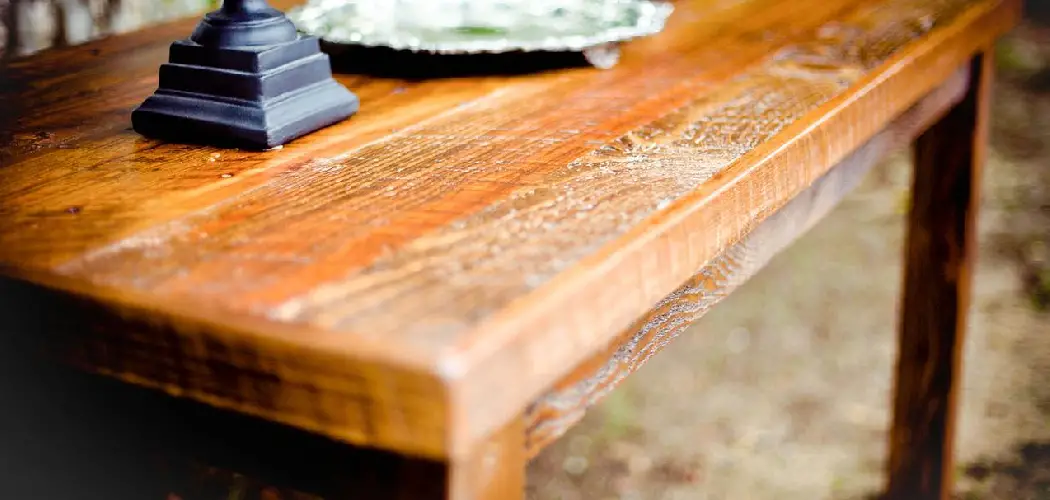Removing felt from wood can be a difficult task. If you’re not careful, you could damage the wood. In this article, we will outline a few methods how to remove felt from wood without damaging the surface. We’ll also provide tips on how to protect the wood during removal. So, if you’re looking to remove felt from your wooden furniture or floors, read on!
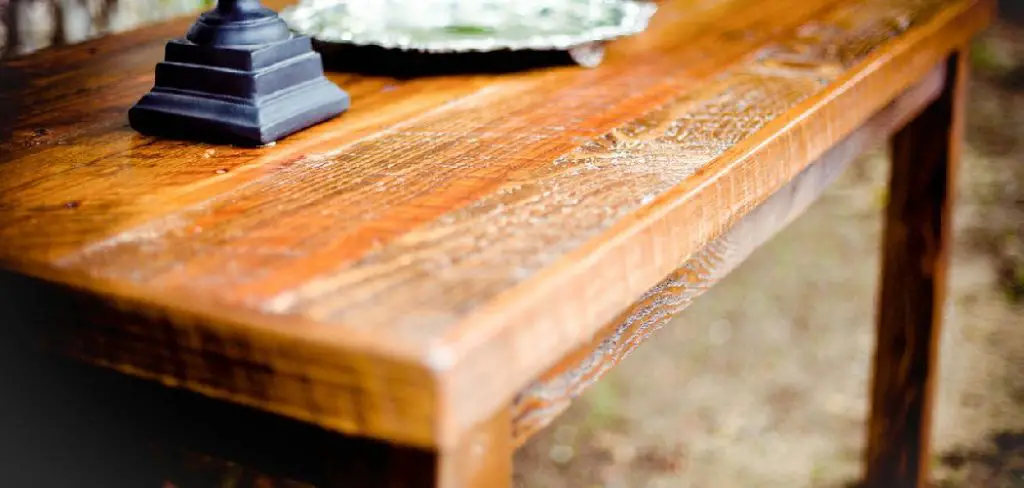
Many people use felt pads under furniture and rugs to protect their floors from scratches. Unfortunately, these felt pads can become stained or embedded with dirt and debris over time. If you’re tired of looking at stained felt pads, or if you need to replace them, you’ll need to know how to remove them from your wood floors. It’s essential to be careful when removing felt pads from wood, as you don’t want to damage the surface.
Summary: Removing felt from wood can be a difficult task, but with the right tools it can be done quickly and easily. Use a belt sander to remove the felt, starting at the top of the board and working your way down. Be careful not to sand too much away, or you’ll end up with a rough surface. Once the felt is removed, use a wood cleaner and a dry cloth to clean the wood.
A Detailed Guide on How to Remove Felt From Wood
Method 1: Using a Putty Knife
What You’ll Need:
- A putty knife
- A hairdryer
- A bowl of hot water
- A drop cloth or old towel
Step 1: Determine How Much Felt You Need to Remove
Before you begin removing the felt, you’ll need to determine how much of it you need to remove. If the felt is only lightly attached, you may be able to remove it with just a putty knife. However, if the felt is more firmly attached, you may need to use a hairdryer in addition to the putty knife.
Step 2: Use a Putty Knife to Loosen the Felt
Once you’ve determined how much felt you need to remove, use a putty knife to loosen it from the wood. Start at one edge of the felt and work your way across. If the felt is very loose, it should come off quickly. If it’s more firmly attached, you may need to use a little force.
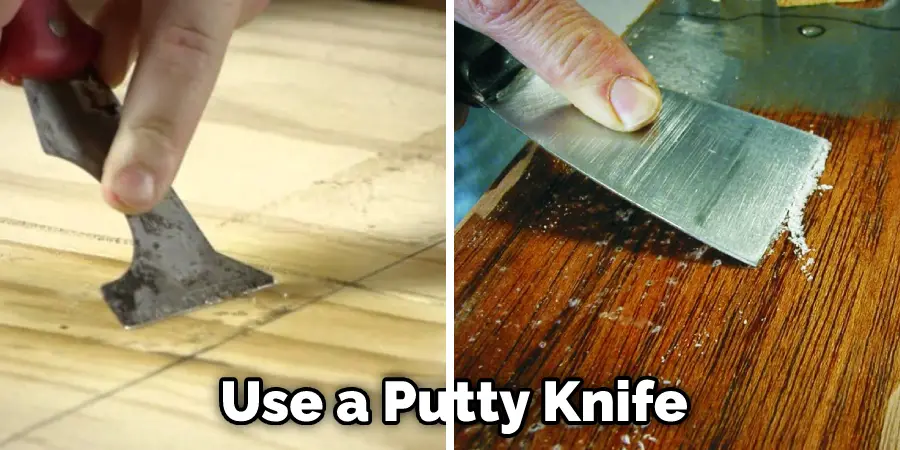
Step 3: Use a Hairdryer to Heat the Felt
If the felt is more firmly attached, you’ll need to use a hairdryer to heat it. This will help loosen the adhesive and make it easier to remove. Hold the hair dryer about 6 inches away from the felt and move it back and forth until the felt is warm to the touch.
Step 4: Use a Bowl of Hot Water
If the hairdryer doesn’t seem to be working, try using a bowl of hot water. Dip a cloth in hot water and apply it to the felt for about 30 seconds. This should help loosen the adhesive.
Step 5: Remove the Felt
Once the felt is loosened, you should be able to remove it easily with your hands. If it’s still stubborn, use a putty knife or your fingers to peel it away from the wood slowly.
Step 6: Repeat as Necessary
If there are still residual pieces of felt left on the wood, repeat steps 2-5 until all of the felt has been removed.
Tips:
- Try not to use too much force when removing the felt. This can damage the wood underneath.
- If you’re using a hairdryer, be careful not to hold it in one spot for too long. This could cause the wood to burn.
- Be sure to work slowly and carefully to avoid tearing the felt.

Method 2: Using Heat and Pressure
What You’ll Need:
- Heat gun
- Scrapper
- Rags
- Iron
Step 1: Figure out Where the Adhesive is Coming From
If you can see where the adhesive is coming from, you can skip to Step 2. If not, you’ll need to find the adhesive source before you can remove it.
Check the seams of your furniture for loose threads. If you find any, gently pull on them until the adhesive becomes visible.
Step 2: Heat Up the Adhesive
Use a heat gun or hair dryer to heat the adhesive. Be careful not to hold the heat gun too close to the surface of the wood, as this could damage it.
Step 3: Scrape Off the Adhesive
Once the adhesive is heated, use a scraper or putty knife to remove it from the surface of the wood. Be sure to scrape in the same direction as the wood grain to avoid damaging it.
Step 4: Remove Any Remaining Adhesive
If there is any adhesive remaining on the surface of the wood, use a rag to apply pressure to the area until it comes off. You can also use an iron on a low heat setting to remove any stubborn adhesive.
Step 5: Finish Up
Once all of the adhesives have been removed, use a rag to wipe down the surface of the wood and remove any residue. Your furniture should now be free of any unwanted adhesive! This is a crucial method in how to remove felt from wood.
Tips:
- Don’t use a heat gun on high settings, as this could damage the wood.
- Be sure to scrape in the same direction as the grain of the wood to avoid damaging it.
- Use an iron on a low heat setting if you need to remove any stubborn adhesive.
- Wipe down the surface of the wood with a rag after you’re done to remove any residue.
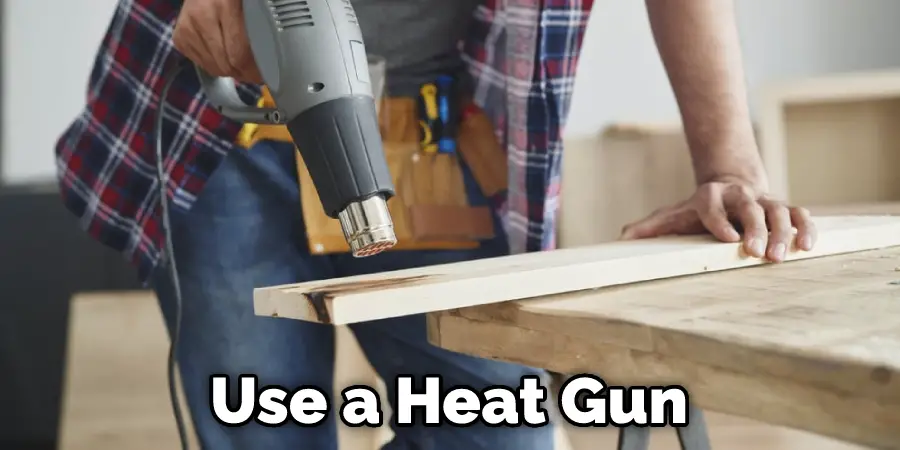
Method 3: Using Vinegar and Water
What You’ll Need:
- 1 part white vinegar
- 1 part water
- A bowl
- A sponge or scrub brush
Step 1: Mix Together Vinegar and Water
In a bowl, mix 1 part white vinegar and 1 part water.
Step 2: Apply the Solution to the Felt
Use a sponge or scrub brush to apply the vinegar solution to the felt. Be sure to saturate the area completely.
Step 3: Let it sit
Let the solution sit on the felt for about 15 minutes to allow it to break down the adhesive.
Step 4: Scrub Away the Felt
After 15 minutes, use a sponge or scrub brush to scrub away the felt. The vinegar should have loosened the adhesive, making it easy to remove. If any stubborn pieces of felt remain, you can soak them in the vinegar solution for a few more minutes before scrubbing.
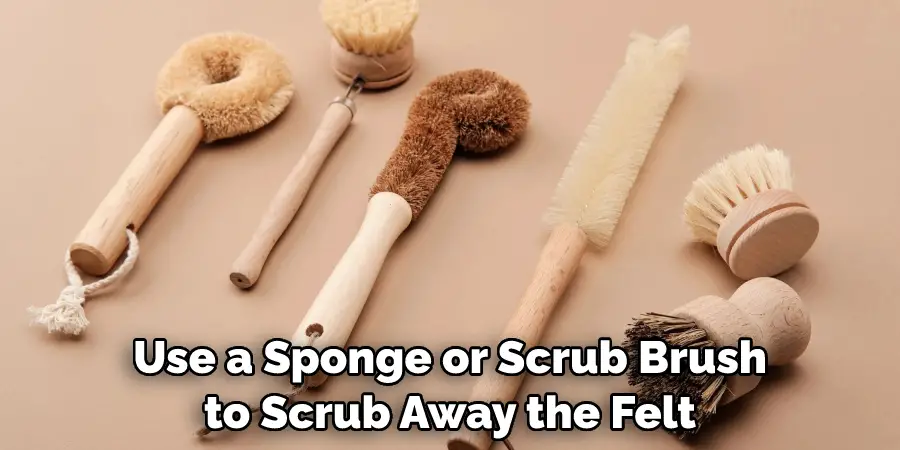
Step 5: Rinse the Area
Once the felt has been removed, rinse the area with water to remove any vinegar residue. Allow the area to dry completely before proceeding.
Tips to avoid damage:
- Use caution when scrubbing the area to avoid damaging the surface beneath the felt.
- Be sure to rinse the area well after removing the felt to avoid vinegar residue.
Removing felt from wood can be challenging, but it can be done relatively quickly with the right tools and techniques. In most cases, white vinegar and water will do the trick. However, if the felt is particularly stubborn, you may need to soak it in the vinegar solution for a few minutes before scrubbing.
Method 4: Using Alcohol
What You’ll Need:
- Denatured alcohol
- A clean, lint-free cloth
- Protective gloves
- Vacuum Cleaner
Step 1: Prepare Yourself and the Area
Before you begin, it’s essential to protect yourself from the fumes of alcohol. Make sure you’re working in a well-ventilated area, and consider wearing gloves and a face mask.
You’ll also want to make sure the area you’re working in is clean. Any dust or dirt on the wood will be lifted along with the felt, so starting with a clean surface is essential.
Step 2: Apply Alcohol to the Felt
Pour some denatured alcohol onto your cloth and gently rub it over the felt. Be sure not to saturate the wood; you want enough alcohol on the cloth to dampen it.
Step 3: Remove the Felt
Once you’ve applied the alcohol, you should see the felt beginning to lift away from the wood. Use your fingers or a putty knife to peel it off into small pieces slowly.
If the felt is proving to be resistant, apply a little more alcohol and let it sit for a minute or two before trying again.
Step 4: Vacuum Away Any Remaining Felt
Once you’ve removed all of the visible felt, it’s time to vacuum up any remnants. Use a brush attachment on your vacuum cleaner to go over the area and ensure you’ve gotten everything.
You may also want to use a lint roller to pick up any smaller pieces of felt that the vacuum might have missed.
Step 5: Dispose of the Felt Properly
Once you’ve removed all of the felt, it’s essential to dispose of it properly. Felt is made of small fibers that can be harmful if inhaled, so it’s important to avoid just throwing it in the trash.
Instead, please place it in a sealed bag or container before disposing it in your regular trashcan.
Tips:
- Use a minimal amount of alcohol, and make sure you don’t saturate the wood.
- Go slowly, and be careful not to scratch the wood as you’re removing the felt.
- Be sure to vacuum (or lint roll) thoroughly to remove all of the small fibers.
- Dispose of the felt properly to avoid inhaling the harmful fibers.
You Can Check It Out to Remove Scratches from High Gloss Furniture
Useful Tips on How to Glue Felt to Wood
1. Select the right adhesive: Choose an adhesive that is suitable for felt and wood, such as a permanent, waterproof glue.
2. Prepare the surface: Sand and clean both the wood and felt to ensure a smooth surface for better adhesion.
3. Apply glue evenly: Apply the adhesive in thin layers over both surfaces and allow it to dry before beginning adhesion.
4. Press felt onto wood: Use firm pressure to firmly press the felt onto the wood surface while keeping fingers away from the adhesive.
5. Allow the glue to set: Wait for the glue to dry completely before releasing pressure on the project so that it will keep in place.
6. Reapply if needed: If there are any places where the felt does not seem secure, reapply the adhesive and press it into place again.
7. Finish with sealant: Apply a waterproof sealant over the finished project to ensure its longevity and durability against wear and tear or moisture damage.
This is especially important if your plan on leaving your project outdoors or in other areas at risk of exposure to water.
How Do You Remove Print From Felt?
Felt is a non-woven fabric that is made from 100% wool. It is very strong and durable, but it can also be absorbent. Because of this, felt can be challenging to remove the print. The best way to remove the print from felt is to use a lint roller. Start by rolling the lint roller over the felt area where the print is located.
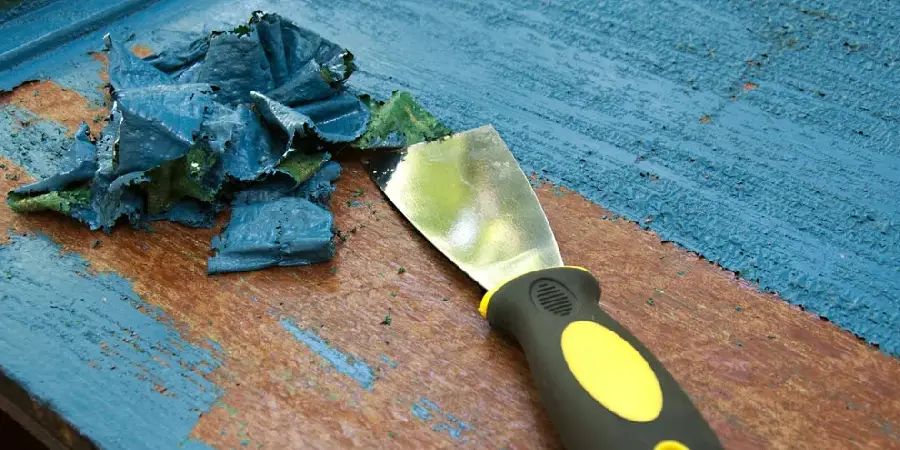
Apply gentle pressure and roll back and forth until the print has been removed. If the lint roller does not remove all of the print, you can also try using a damp cloth to rub the remaining ink off of the felt gently. Once you have removed as much of the print as possible, you can place the felt in the dryer on low heat for about 10 minutes to help remove any residual ink.
How to Glue Felt to Wood?
Gluing felt to wood is a simple process that can be completed with the right supplies and a few steps. First, ensure the wood surface you’re working with is clean and smooth. This will ensure the glue adheres properly to the wood for a secure bond. Next, cut your felt into the desired shape or size that you need for your project. Once cut, apply a thin layer of glue to the wood surface and place the felt on top.
Smooth out any air bubbles with a roller or a cloth. Allow the glue to dry completely before using your product. It’s best to wait 24 hours for maximum adhesion. If possible, use clamps or weights to keep the felt in place while the glue is drying. This will help ensure that the felt doesn’t move when it dries and creates an even more secure bond between the felt and wood. With these steps, you can easily glue felt to wood for any project.
You Can Check it Out to Split Wood With a Maul
Conclusion
Now that you know how to remove felt from wood, it’s time to get started on your next project! Be sure to use the techniques we outlined in this post so that you can avoid any potential damage and have a successful outcome. So what will you make next?
You May Also Read: How to Glue Ceramic Tile to Wood

